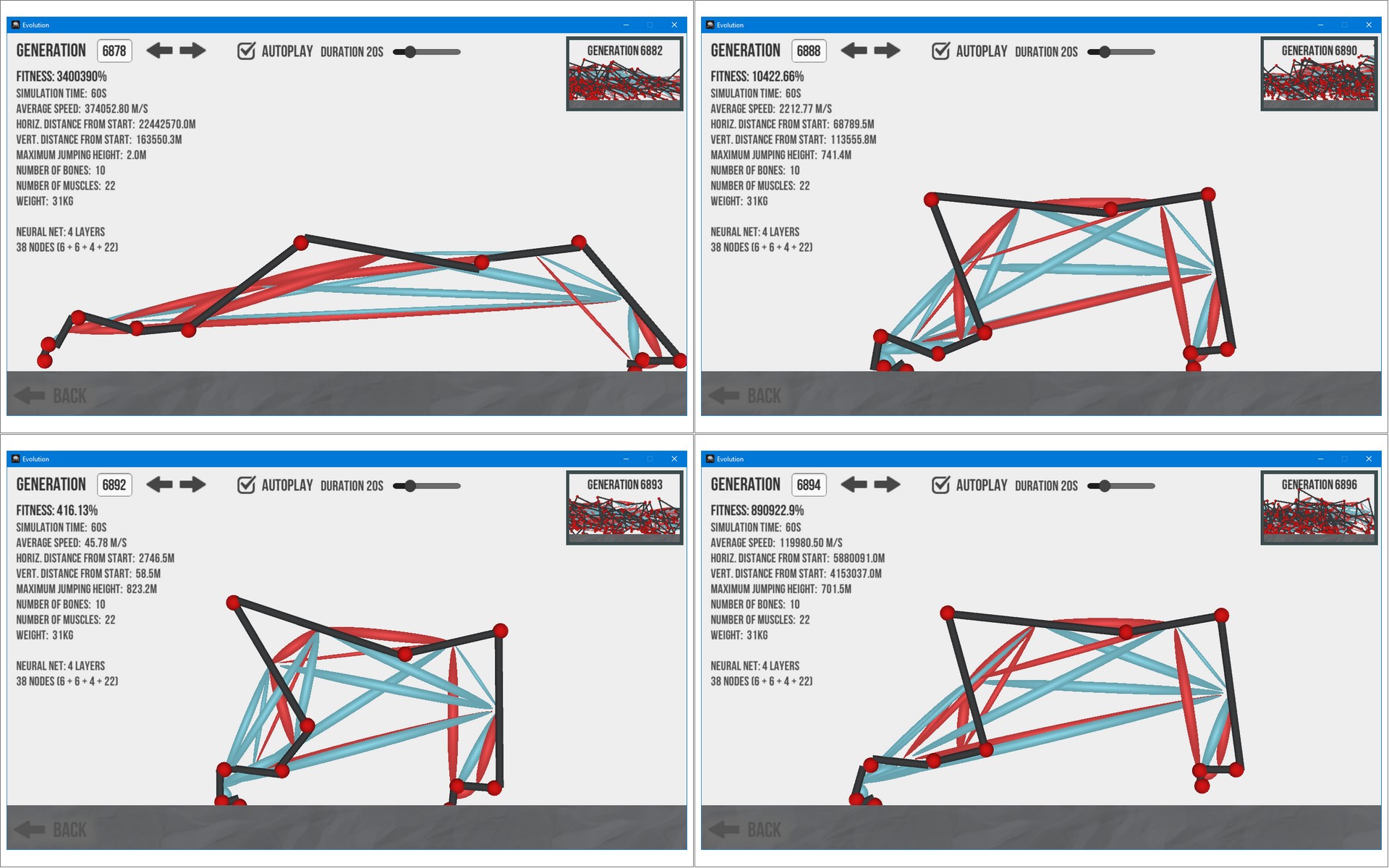Hi again and thanks for explaining. I've been testing the optimization branch and I have some data points:
If I load my best save file (creature in the first video) into the optimization branch then during the first 3 generations from the save point the creature will invariably deteriorate to sub-11 speed. Then, by generation 4 from the save point, I will consistently get the "crazy" distance-from-start numbers. This will continue for each generation after that point, i.e., there won't be any "sane" gens in between (as I get with the master branch). In the video below (of the optimization branch) the loaded save file was gen 6830 created by the master branch:
So, for my creature, the optimization branch will have deteriorating behavior and "crazy numbers" as the rule (instead of the exception as is the case with the current master branch). This happens no matter what I try, in terms of colliders, isKinematic, and various other things I looked into. The only way to fix the distances is to eliminate SetActive(False). But then the physics change and there is no evolution (30% fitness after 7000 generations - I let it run over the weekend since it doesn't crash now).
But, if in evolution.cs I switch back to killgeneration() instead of resetcreatures() then I get the same behaviour as that of the released version (I later noticed that you have a related comment in the master branch). When I say the same behaviour, the "crazy numbers" also show up albeit with the same frequency as for the released version:

What I think is happening:
The SetActive(False) is necessary to keep the physics right (for some obscure reason) but, under some condition, it messes up the object's Transform(?) so that the position returned later on in best.GetStatistics() is garbage. The master branch destroys and creates new objects so a "messed up" Transform will not persist into the next generation. But the resetcreatures() of the optimization branch preserves the actual objects. Once a Transform is "ruined" it will carry over into the next generation. So the best creature in every generation after that will have the "crazy" distance-from-start numbers.
The overall deterioration of the creatures (with components all over the place for gen 6846 in the video above) suggests that the destruction and recreation that goes on in the KillGeneration() of the master branch helps to mask an inherent problem with reusing the objects after deactivation/activation?
What is needed is some way to "reset the physics" between generations but without deactivating? This may even be a Unity issue, it makes no sense that commenting out the SetActive calls in SimulateGeneration() changes the creatures so much.

